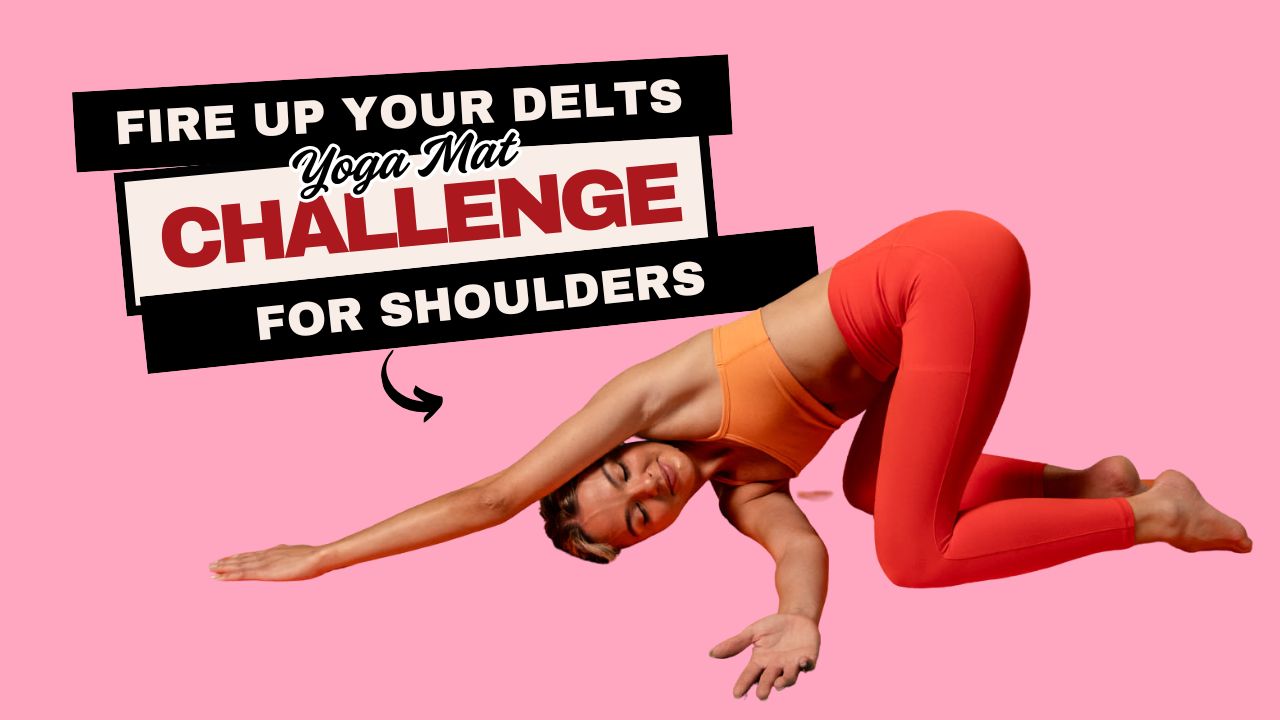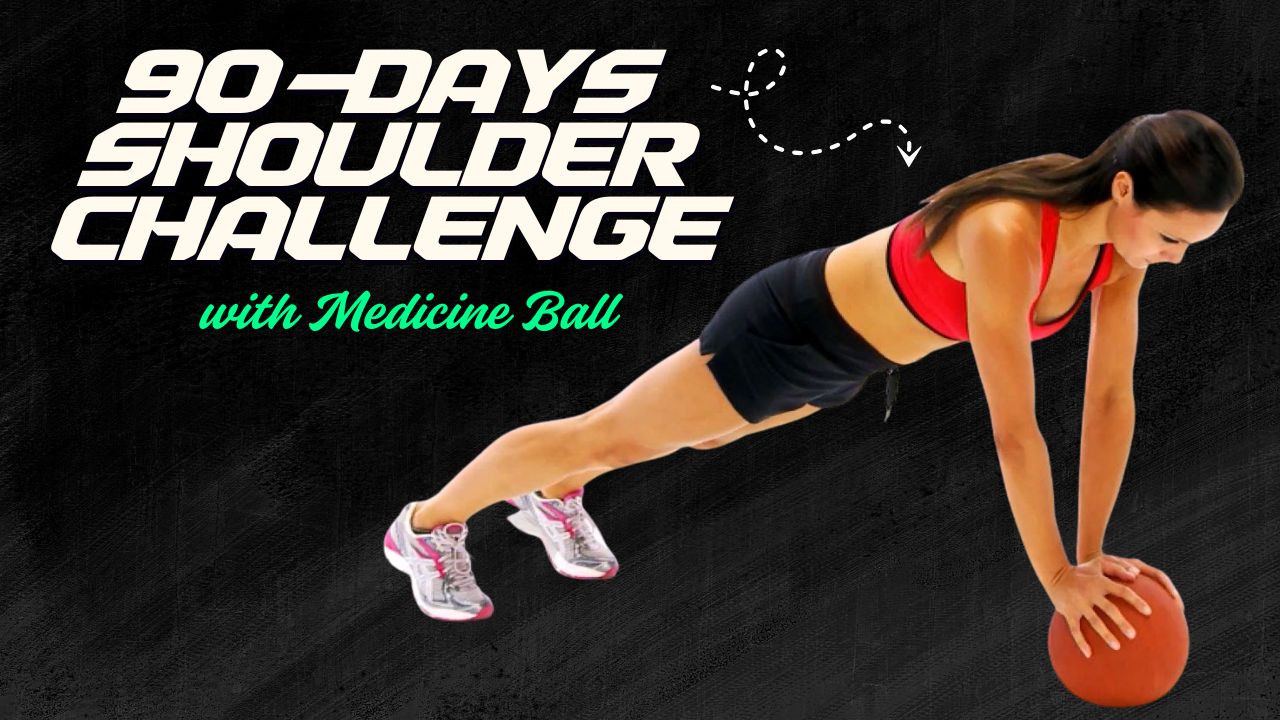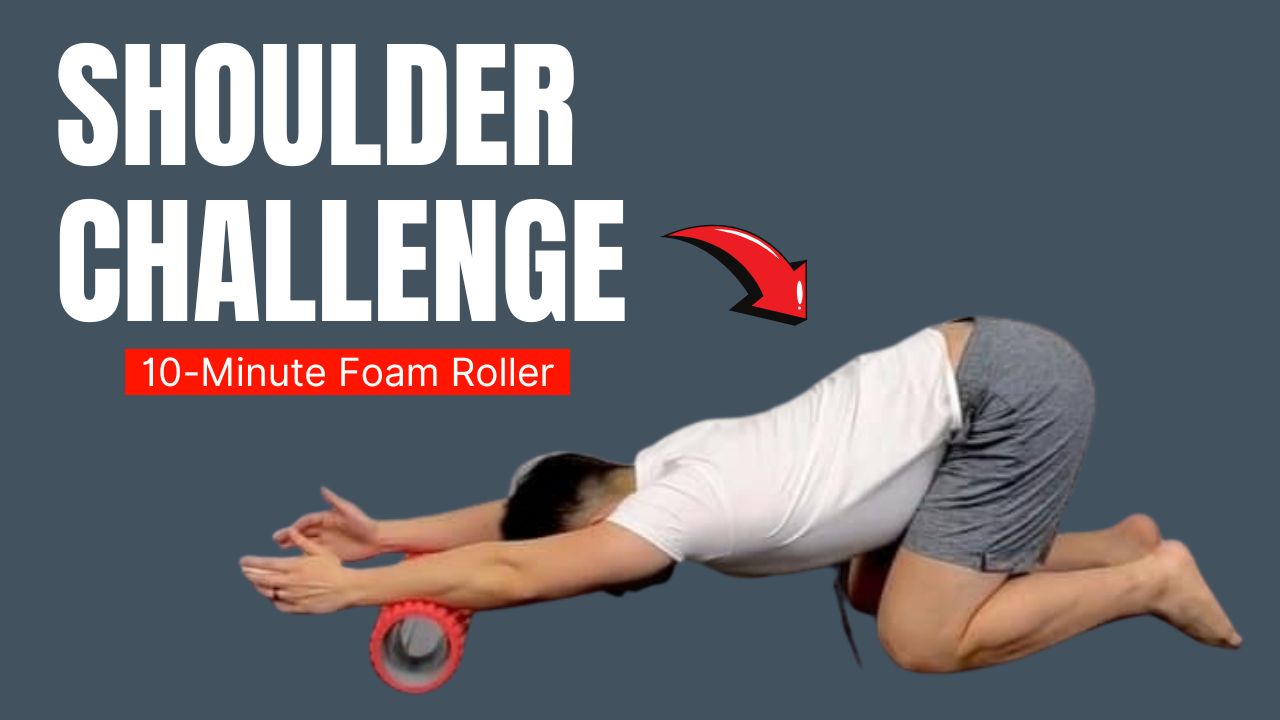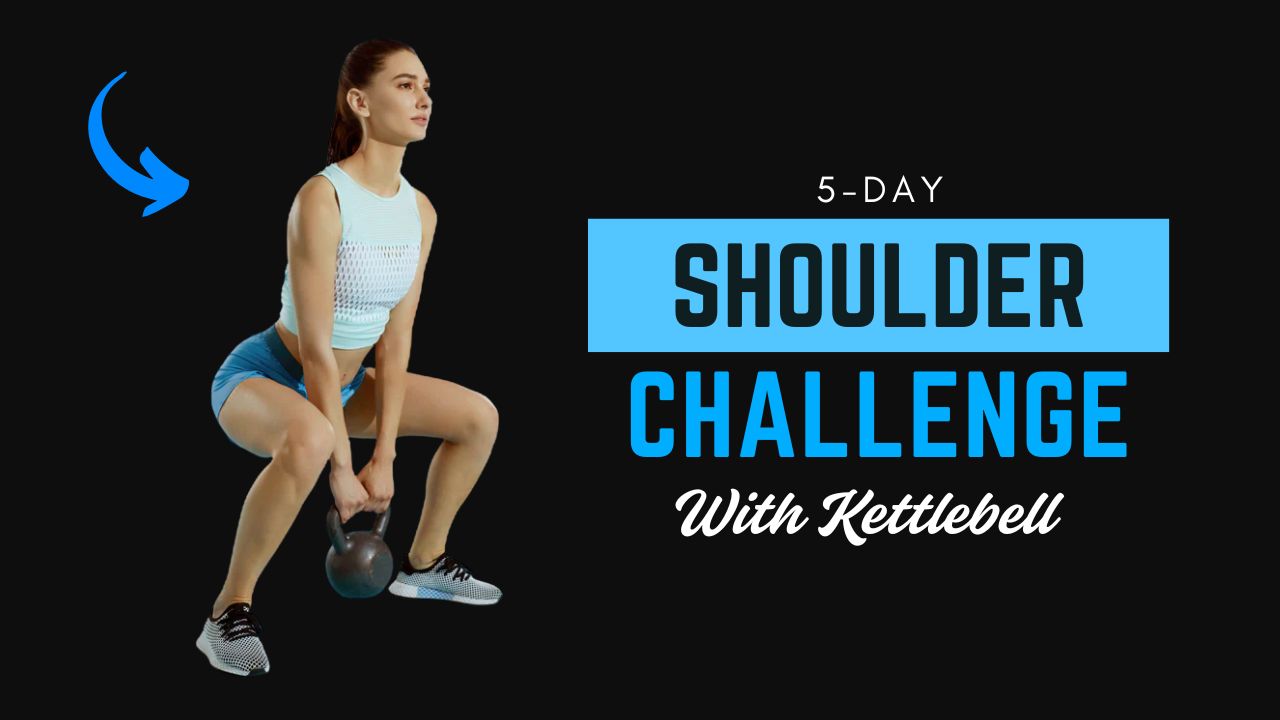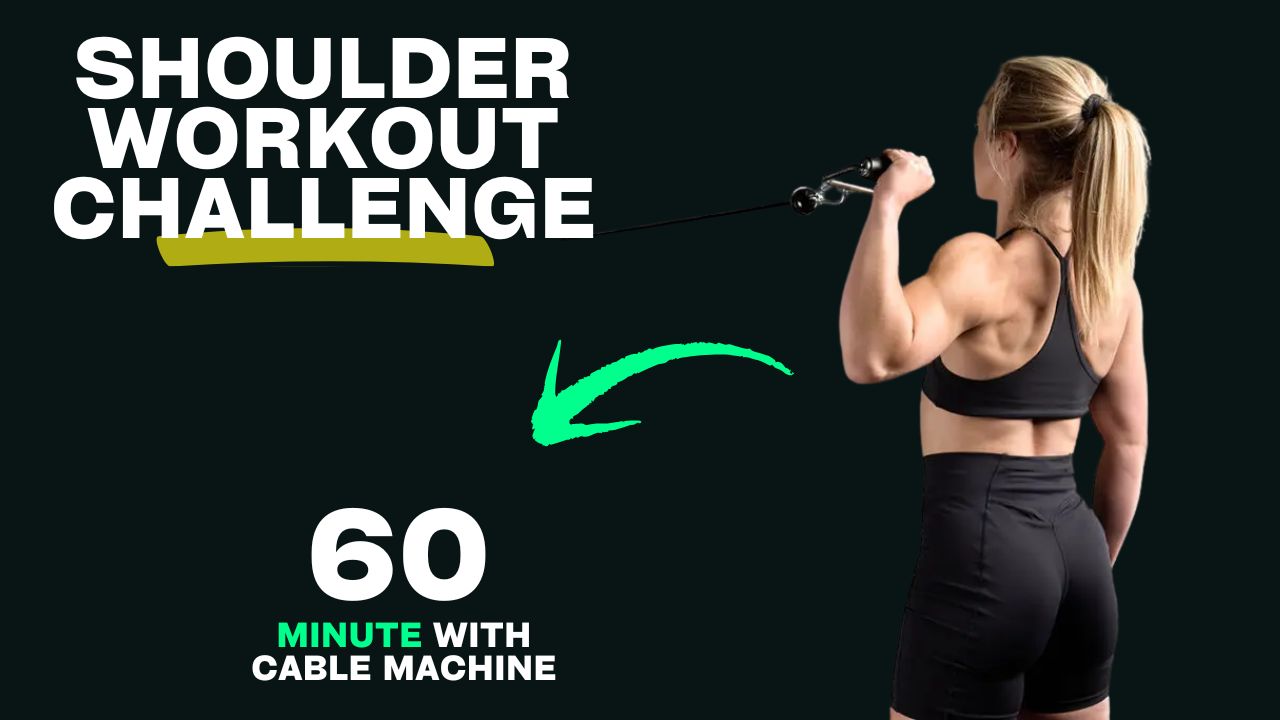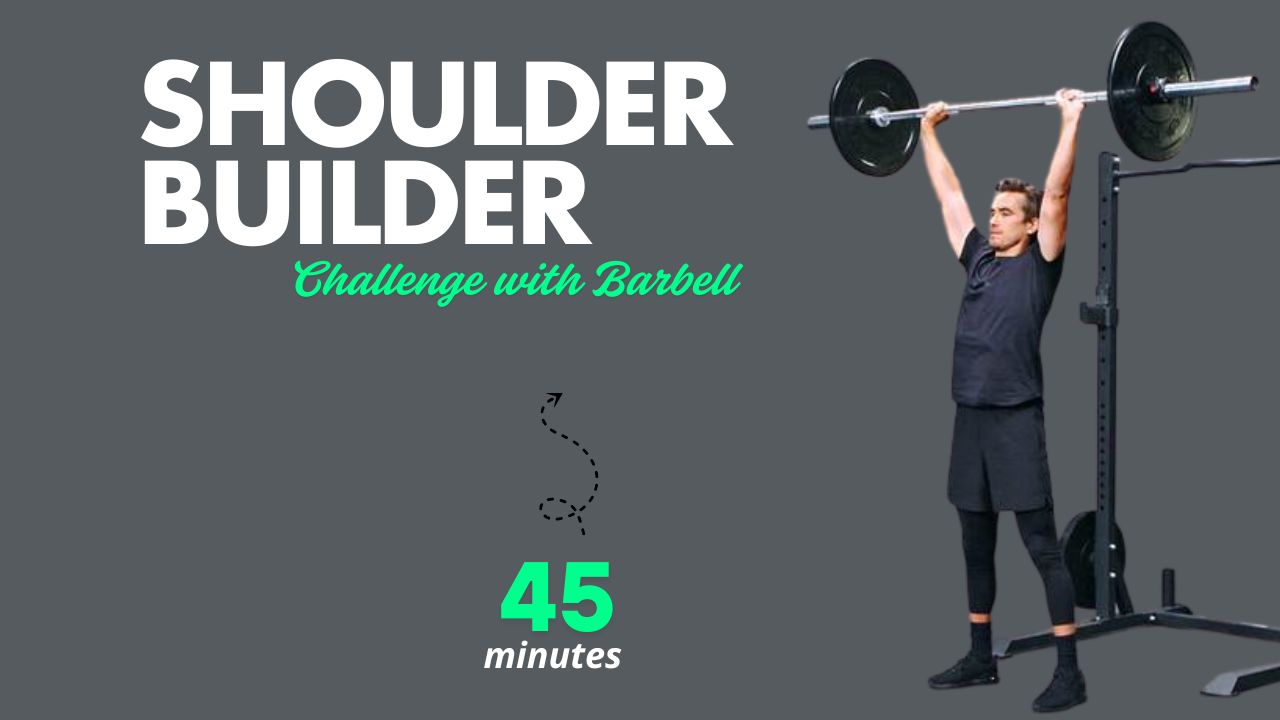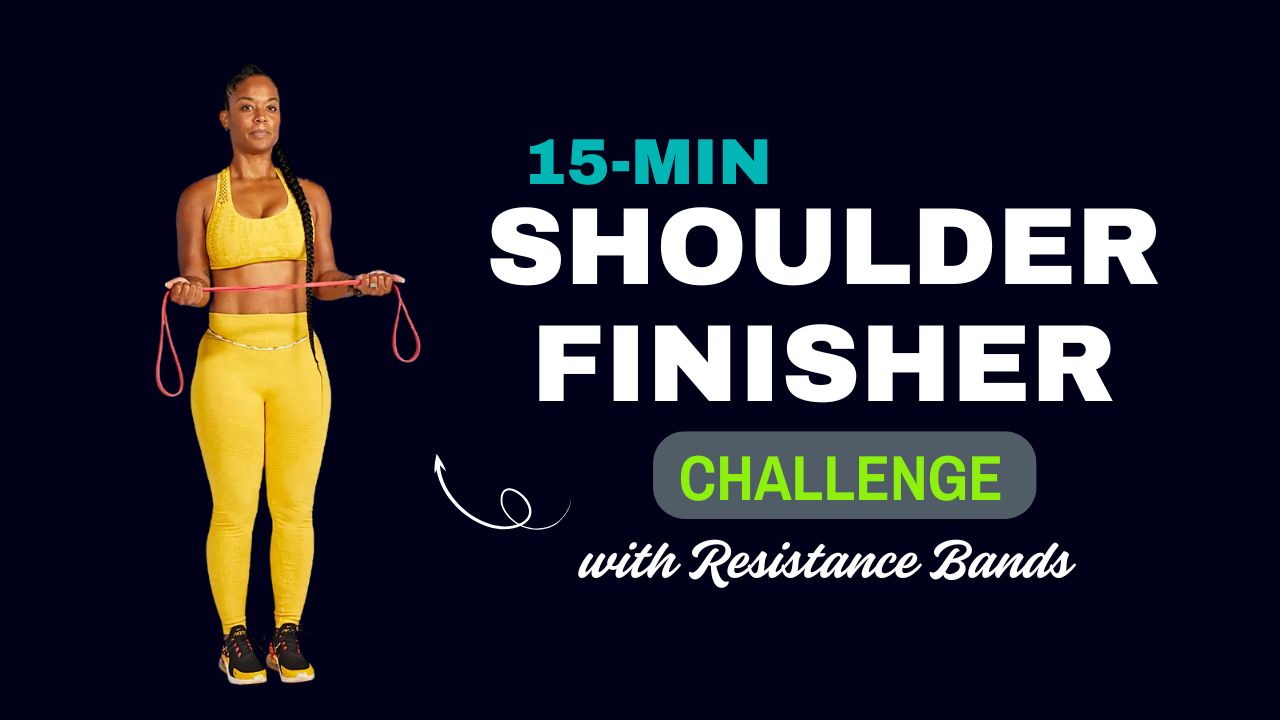If you’ve been hitting the gym but your back workouts feel repetitive, it’s time for a serious upgrade. The 45-Minute Back Shredder Challenge isn’t just about building a V-shaped back—it’s about training for balance, coordination, and functional strength.
This barbell-based routine pushes your muscles and nervous system to work together, resulting in a more stable, powerful, and athletic body.
Most people think of back training as a way to look good from behind, but here’s a fact: Your back is the structural foundation of nearly every movement you make.
From carrying groceries to sprinting or swinging a bat, a strong back enhances every activity. This challenge is designed to target your lats, traps, rhomboids, erector spinae, and rear delts, while simultaneously improving your body’s ability to stabilize under load.
Did you know?
Many balance-related issues in workouts aren’t because of “weak legs” but because the back muscles aren’t firing properly. Weak spinal stabilizers can make you wobble during squats, deadlifts, and even overhead presses. Training your back with balance-focused barbell moves addresses this problem directly.
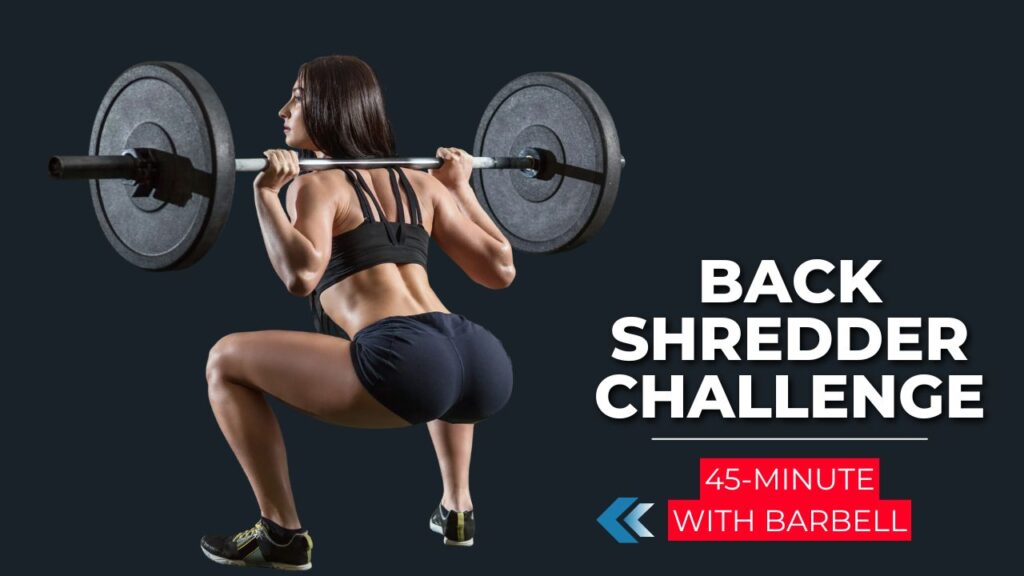
Table of Contents
What Can Happen After 30 Days of the 45-Minute Back Shredder Challenge
| Positive Changes You May Notice | Why It Happens |
|---|---|
| Improved back strength and endurance | Consistent resistance training stimulates muscle growth and increases muscular stamina. |
| Better posture and reduced shoulder rounding | Strengthening the mid and upper back muscles supports spinal alignment. |
| Enhanced balance and coordination | The mix of bilateral and unilateral barbell exercises trains stabilizing muscles and the nervous system. |
| Increased lifting confidence | Repetition of key movements builds familiarity and control with the barbell. |
| Stronger grip strength | Heavy pulls and holds stimulate forearm and hand muscles, improving grip. |
| More efficient hip hinge mechanics | Deadlifts, RDLs, and good mornings refine the hinge movement pattern. |
| Noticeable muscle definition in the lats, traps, and rear delts | Targeted volume and progressive overload encourage hypertrophy in these areas. |
| Better performance in other lifts and sports | A stronger back supports more power and stability across multiple movements. |
Do’s and Don’ts for the 45-Minute Back Shredder Challenge
| Do’s | Don’ts |
|---|---|
| Warm up for at least 5–7 minutes before starting to prepare your muscles and joints. | Skip the warm-up — lifting cold muscles increases the risk of injury. |
| Focus on proper form for every rep to maximize results and reduce injury risk. | Sacrifice technique for heavier weights — poor form leads to setbacks. |
| Engage your core throughout each lift to improve stability and protect your spine. | Let your lower back round during lifts — this puts excess strain on the spine. |
| Start with manageable weights and gradually increase as strength improves. | Jump straight to heavy weights without building a strength foundation. |
| Use controlled movements — lift and lower the barbell with intention. | Rely on momentum to move the barbell — it reduces muscle engagement. |
| Rest for the recommended time between sets to maintain workout intensity. | Take excessively long rests — it reduces the challenge and effectiveness. |
| Maintain a neutral neck and back position during all exercises. | Strain your neck or hyperextend your back while lifting. |
| Listen to your body — stop immediately if you feel sharp pain. | Push through severe discomfort thinking it’s just “normal soreness.” |
The Back Shredder Barbell Exercises
Below is a list of powerful barbell exercises that make up this challenge. Each movement is selected to develop strength, shred muscle, and sharpen your balance and coordination.
1. Barbell Deadlift
The king of all back exercises, deadlifts engage the entire posterior chain—including your lower back, traps, lats, and hamstrings—while training your grip and core stability.
How to Perform:
- Stand with your feet hip-width apart, barbell over your mid-foot.
- Bend at your hips and knees, grip the bar just outside your knees.
- Keep your back straight, chest up, and engage your core.
- Drive through your heels, extending your hips and knees until fully upright.
- Lower the bar back to the floor in a controlled motion.
Form Tip: Avoid rounding your lower back—this keeps the movement safe and effective.
Myth Busted: Many believe deadlifts are “dangerous.” In reality, poor form is the danger; when done correctly, deadlifts are one of the safest and most functional lifts.
2. Barbell Bent-Over Row
Perfect for building mid-back thickness and improving postural strength.
How to Perform:
- Hold the barbell with an overhand grip, hands shoulder-width apart.
- Bend forward at the hips until your torso is almost parallel to the floor.
- Pull the barbell towards your upper waist, squeezing your shoulder blades together.
- Slowly lower it back to the starting position.
Form Tip: Keep your neck neutral and your core braced to avoid strain.
Did you know? Rows improve scapular retraction—key for better shoulder health and bench press stability.
3. Barbell Front Rack Good Morning
This twist on the classic good morning targets the erector spinae while challenging balance due to the front-loaded bar position.
How to Perform:
- Position the barbell in a front rack (like for a front squat), elbows high.
- With feet hip-width apart, hinge at the hips while keeping your chest up.
- Lower until your torso is almost parallel to the ground.
- Return to standing, squeezing your glutes at the top.
Form Tip: Keep a slight bend in your knees to avoid excessive hamstring strain.
4. Barbell Landmine Row (Single Arm)
This unilateral movement boosts coordination by forcing each side of the back to work independently.
How to Perform:
- Place one end of a barbell in a landmine attachment or secure it in a corner.
- Load the free end with weight plates.
- Stand perpendicular to the bar, holding the sleeve with one hand.
- Row the bar towards your ribcage, pause, then lower slowly.
- Complete reps on one side before switching.
Fact: Unilateral training improves muscle imbalances and helps prevent injury.
5. Barbell Overhead Press from Split Stance
Although primarily a shoulder move, performing it from a split stance engages your back stabilizers for balance.
How to Perform:
- Stand with one foot forward and one foot back.
- Hold the barbell at shoulder level with an overhand grip.
- Press the bar overhead, fully extending your arms.
- Lower it under control.
- Switch stance halfway through the set.
Balance Benefit: The split stance forces your spinal erectors and core to work harder.
6. Barbell Romanian Deadlift (RDL)
Great for targeting the lower back, glutes, and hamstrings while enhancing hip hinge mechanics.
How to Perform:
- Stand tall holding the barbell with an overhand grip.
- Keep your knees slightly bent and hinge at your hips.
- Lower the bar along your thighs until you feel a stretch in your hamstrings.
- Drive your hips forward to return to standing.
Tip: Keep the bar close to your body to protect your lower back.
7. Barbell Shrug with Hold
A simple yet powerful movement for building upper traps and improving grip.
How to Perform:
- Stand tall holding the barbell in front of you with an overhand grip.
- Shrug your shoulders as high as possible.
- Hold for 2–3 seconds before lowering.
Fun Fact: Strong traps contribute to better posture and reduced neck strain.
8. Barbell Suitcase Deadlift
A loaded carry variation that strengthens your back stabilizers and challenges balance.
How to Perform:
- Place a loaded barbell next to your side (parallel to your body).
- Stand with feet hip-width apart and grip the bar with one hand.
- Deadlift the bar to standing without leaning to the side.
- Lower and repeat, then switch sides.
9. Barbell Pendlay Row
An explosive row variation that starts from the floor each rep, great for developing power and stability.
How to Perform:
- Set the barbell on the floor, grip it slightly wider than shoulder-width.
- Bend over until your torso is parallel to the ground.
- Pull the bar explosively to your lower chest.
- Lower it back to the floor and reset before the next rep.
10. Barbell Back Extension on Bench
When done with light weight, this builds endurance in the lower back for long-term stability.
How to Perform:
- Set up a back extension bench.
- Hold a barbell plate or light barbell across your upper back.
- Lower your torso down until parallel to the ground.
- Extend your back to return to the starting position.
45-Minute Back Shredder Challenge Routine
Here’s how to put it all together into a time-efficient, high-intensity workout.
| Exercise | Sets | Reps | Rest |
|---|---|---|---|
| Deadlift | 3 | 8 | 90 sec |
| Bent-Over Row | 3 | 10 | 60 sec |
| Front Rack Good Morning | 3 | 8 | 60 sec |
| Landmine Row (Single Arm) | 3 | 10 each side | 45 sec |
| Split Stance Overhead Press | 3 | 8 each side | 60 sec |
| Romanian Deadlift | 3 | 8 | 60 sec |
| Shrug with Hold | 3 | 12 | 45 sec |
| Suitcase Deadlift | 2 | 10 each side | 45 sec |
| Pendlay Row | 2 | 8 | 60 sec |
| Back Extension | 2 | 12 | 45 sec |
Total Time: ~45 minutes
Additional Tips for Success
- Warm-up properly with 5–7 minutes of dynamic stretching and light cardio.
- Use a weight that challenges you but allows perfect form.
- Focus on smooth, controlled movements rather than rushing through reps.
- Keep your core tight throughout every lift to maximize stability.
Interesting Fact: Coordination training doesn’t just help in the gym—it improves everyday activities, from carrying heavy bags to walking on uneven ground.
Conclusion
The 45-Minute Back Shredder Challenge with Barbell is more than just a workout—it’s a strategic blend of strength training, balance enhancement, and coordination building. By targeting your back from multiple angles with both bilateral and unilateral movements, you’re not only shaping a powerful physique but also improving your body’s functional capabilities.
A strong, well-coordinated back means better posture, reduced risk of injury, and greater performance in everything from sports to daily life tasks. Whether you’re lifting, sprinting, or simply standing upright for long periods, the stability and strength you develop here will serve you well.
Remember, the goal isn’t to just move the barbell—it’s to control it with precision. Focus on form, stay consistent, and progressively challenge yourself with slightly heavier weights or reduced rest times as you adapt.
Commit to this challenge for several weeks, and you’ll feel the difference—not just in how your back looks, but in how your entire body moves and performs.
Frequently Asked Questions (FAQs)
Can beginners try the 45-Minute Back Shredder Challenge?
Yes, beginners can try this routine, but it’s important to start with lighter weights and focus on perfecting form before increasing the load. If you’re completely new to barbell training, consider working with a certified trainer for the first few sessions.
How often should I do this workout?
For best results, perform this challenge 1–2 times per week with at least 48 hours of rest between sessions to allow your back muscles to recover and grow.
Do I need any equipment other than a barbell?
A barbell and weight plates are essential, but some exercises (like landmine rows) may require a landmine attachment or a secure corner to place the bar. A bench or back extension station will also be useful.
Can I replace any exercises if I don’t have certain equipment?
Yes. For example, if you can’t perform landmine rows, you can substitute them with single-arm dumbbell rows. The key is to keep movements that target similar muscle groups and maintain the balance/coordination focus.
How long will it take to see results?
Most people notice improvements in strength and coordination within 3–4 weeks of consistent training. Visible muscle changes typically take 6–8 weeks, depending on your nutrition and overall training program.
Is this workout suitable for people with lower back pain?
If you have lower back pain, consult a physiotherapist before starting. Some of these exercises can be modified or replaced with less load-bearing movements to avoid aggravating the condition.
Can this routine help improve posture?
Yes. Strengthening the back muscles, especially the mid and upper back, can correct rounded shoulders and support better posture over time.
Should I do cardio on the same day as this workout?
You can, but it’s better to perform cardio after the workout or on a separate day to avoid fatiguing your muscles before lifting heavy weights.
